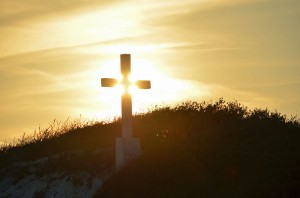 The lesson of Dostoyevsky’s works can be summed up like this: It is the Cross that focuses the human condition in all its bitterness and all its horror, and it is the Resurrection that proclaims the final response of God; His promise of freedom from sin, the overcoming of death, and abundant life at last.
The lesson of Dostoyevsky’s works can be summed up like this: It is the Cross that focuses the human condition in all its bitterness and all its horror, and it is the Resurrection that proclaims the final response of God; His promise of freedom from sin, the overcoming of death, and abundant life at last.
The great, Russian writer captured the heart of the human experience of God in Christ, which intuits that without the Resurrection the Crucifixion is a meaningless execution. On the other hand, without the Crucifixion, man could comfortably ignore the seriousness of God’s gift and forget that He is offering us everlasting life.
That’s partly why on Saturday, September 14, Roman Catholics will celebrate the Feast of the Exaltation of the Holy Cross along with Eastern Catholics and the Orthodox who similarly celebrate the Universal Exaltation of the Precious and Life-Giving Cross. To give you a little context for this Feast, St. John Chrysostom, writing sometime around 395, describes for us that three crosses were discovered at Golgotha (also known as Calvary, which is the place where Jesus was crucified) by St. Helena (the mother of St. Constantine the Byzantine Emperor). While it wasn’t immediately apparent to everyone which of the crosses could have been the one on which Jesus was crucified, miracles began to occur for people who touched one particular cross. It became clear, then, that that particular cross was the Cross of Christ.
 Icons for this Feast are quite beautiful and telling because they depict St. Macarius elevating the Cross, sometimes in the presence of St. Constantine the Emperor, St. Helena, bishops, priests, and even hymnographers. The presence of hymnographers can be especially important because it is a way for the iconographer to tell us that these events were true, and that they were recorded. It can also tell us that we, too, must find a way liturgically to understand what happened on the Cross and to equally find the glory in it. Here’s what I mean:
Icons for this Feast are quite beautiful and telling because they depict St. Macarius elevating the Cross, sometimes in the presence of St. Constantine the Emperor, St. Helena, bishops, priests, and even hymnographers. The presence of hymnographers can be especially important because it is a way for the iconographer to tell us that these events were true, and that they were recorded. It can also tell us that we, too, must find a way liturgically to understand what happened on the Cross and to equally find the glory in it. Here’s what I mean:
Before Thy Cross we bow down in worship, O Master, and Thy holy Resurrection we glorify. (Thrice) Glory to the Father, and to the Son, and to the Holy Spirit, both now and ever, and unto the ages of ages. Amen. And Thy holy Resurrection we glorify. Before Thy Cross we bow down in worship, O Master, and Thy holy Resurrection we glorify.
The poetry and deep theological meaning are quite obvious here. In this stanza from an Eastern Christian hymn, we are acknowledging how God suffered (on the cross) and that we will become obedient to Him (by bowing to Him) in the very debasement and death that we, as humanity, forced upon Him. But we don’t stop there. We immediately offer our praise and thanksgiving to God for the Resurrection and the fact that we may eventually participate in it. From there we simply continue to glorify God over and over.
Still, why do we need a special feast day to celebrate the Cross, which we do so sadly during Holy Week? Simply put, we exalt the cross because it focuses us. Lifting up the cross brings to our attention how vicious and constant is our sinning. It focuses us on how far we are from God and how much God had to suffer for each of us. It also brings specific, pointed attention to the fact that Jesus overcame sin and death – through Resurrection – on our behalf.
So, during this Year of Faith, please ask yourself this: do I really understand the Cross? Do I glorify it? Am I prepared to carry my cross in this life?
Let us pray for one another that we may live our faith in this way.



